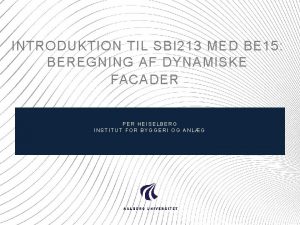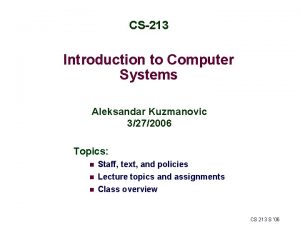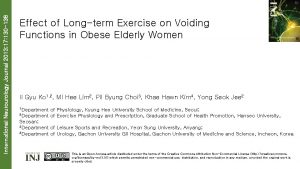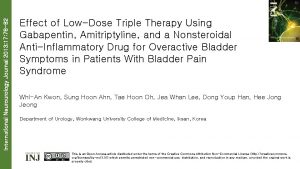International Neurourology Journal 2014 18 213 220 Effect







- Slides: 7

International Neurourology Journal 2014; 18: 213 -220 Effect of Combined Systematized Behavioral Modification Education Program With Desmopressin in Patients With Nocturia: A Prospective, Multicenter, Randomized, and Parallel Study Sung Yong Cho 1, Kyu-Sung Lee 2, Jang Hwan Kim 3, Ju Tae Seo 4, Myung-Soo Choo 5, Joon Chul Kim 6, Jong Bo Choi 7, Miho Song 5, Ji-Youn Chun 5, Seung-June Oh 8 1 Department of Urology, College of Medicine, Seoul, Korea 2 Department of Urology, 3 Department of Urology, 4 Department of Urology, Seoul, Korea 5 Department of Urology, 6 Department of Urology, 7 Department of Urology, 8 Department of Urology, Seoul Metropolitan Government-Seoul National University Boramae Medical Center, Seoul National University Samsung Medical Center, Sungkyunkwan University School of Medicine, Seoul, Korea Severance Hospital, Yonsei University College of Medicine, Seoul, Korea Cheil General Hospital & Women’s Healthcare Center, Catholic Kwandong University College of Medicine, Asan Medical Center, University of Ulsan College of Medicine, Seoul, Korea Bucheon St. Mary’s Hospital, The Catholic University of Korea College of Medicine, Bucheon, Korea Ajou University Hospital, Ajou University School of Medicine, Suwon, Korea Seoul National University Hospital, Seoul National University College of Medicine, Seoul, Korea This is an Open Access article distributed under the terms of the Creative Commons Attribution Non-Commercial License (http: //creativecommons. org/licenses/by-nc/3. 0/) which permits unrestricted non-commercial use, distribution, and reproduction in any medium, provided the original work is properly cited.

International Neurourology Journal 2014; 18: 213 -220 INTRODUCTION • The aims of this study were to investigate the efficacy of combining the systematized behavioral modification program (SBMP) with desmopressin therapy and to compare this with desmopressin monotherapy in the treatment of nocturnal polyuria (NPU). MATERIALS AND METHODS • Patients were randomized at 8 centers to receive desmopressin monotherapy (group A) or combination therapy, comprising desmopressin and the SBMP (group B). • Nocturia was defined as an average of 2 or more nightly voids. • The primary endpoint was a change in the mean number of nocturnal voids from baseline during the 3 -month treatment period. The secondary endpoints were changes in the bladder diary parameters and questionnaires scores, and improvements in self-perception for nocturia.

International Neurourology Journal 2014; 18: 213 -220 RESULTS • A total of 124 patients were randomized to receive treatment, with group A comprising 68 patients and group B comprising 56 patients. • The patients’ characteristics were similar between the groups. • Nocturnal voids showed a greater decline in group B (− 1. 5) compared with group A (− 1. 2), a difference that was not statistically significant. Significant differences were observed between groups A and B with respect to the NPU index (0. 37 vs. 0. 29, P=0. 028), the change in the maximal bladder capacity (− 41. 3 m. L vs. 13. 3 m. L, P<0. 001), and the rate of patients lost to follow up (10. 3% [7/68] vs. 0% [0/56], P=0. 016). • Self-perception for nocturia significantly improved in both groups. CONCLUSIONS • Combination treatment did not have any additional benefits in relation to reducing nocturnal voids in patients with NPU; however, combination therapy is helpful because it increases the maximal bladder capacity and decreases the NPI. Furthermore, combination therapy increased the persistence of desmopressin in patients with NPU.

International Neurourology Journal 2014; 18: 213 -220

International Neurourology Journal 2014; 18: 213 -220 Fig. 1. Study design and disposition of patients. ICIQ-N, International Consultation on Incontinence Questionnaire-Nocturia; N-Qo. L, nocturia quality of life; SBMP, systematized behavioral modification program; PPBC, patient perception of bladder condition; ITT, intention-to-treat; GRA, global response assessment.

International Neurourology Journal 2014; 18: 213 -220 Table 1. Patient demographics and baseline characteristics

International Neurourology Journal 2014; 18: 213 -220 Table 2. Responses to desmopressin and combination treatments













